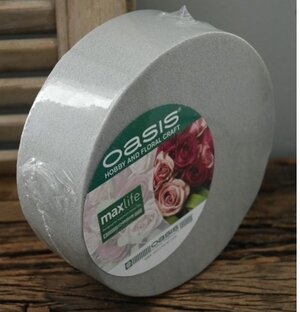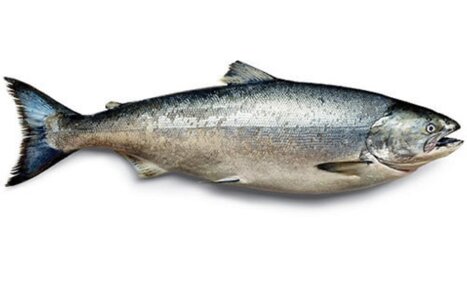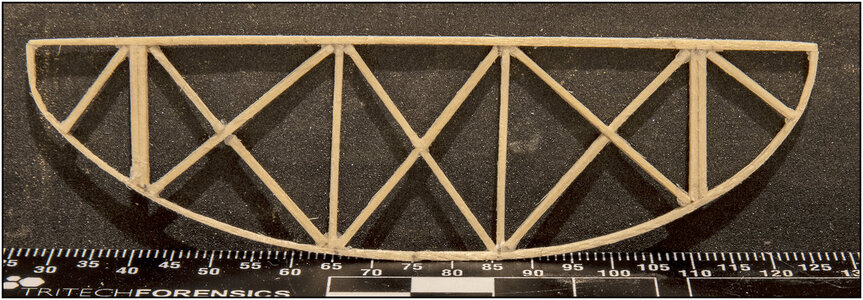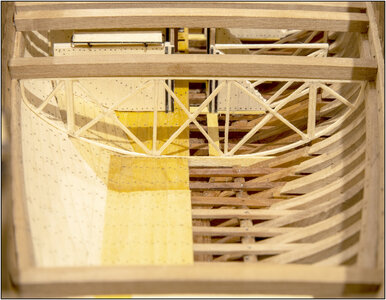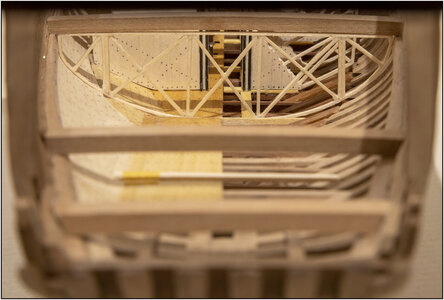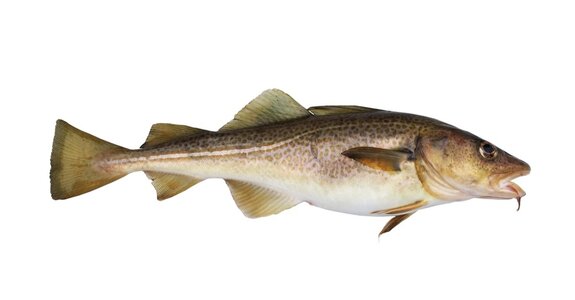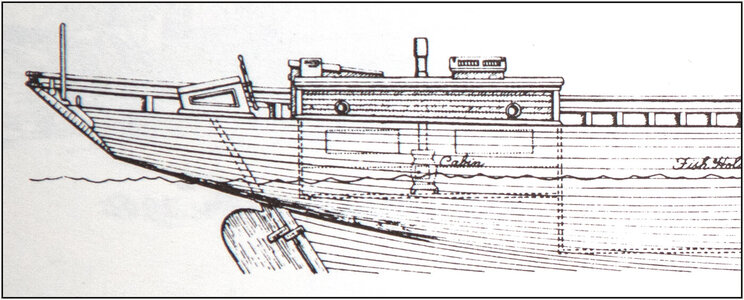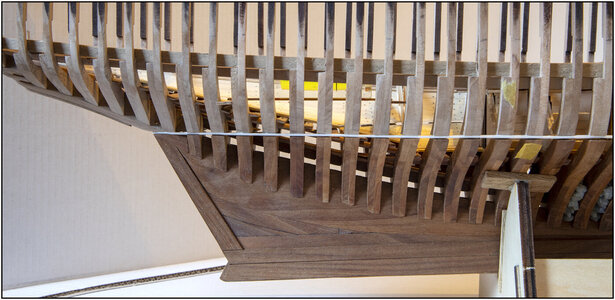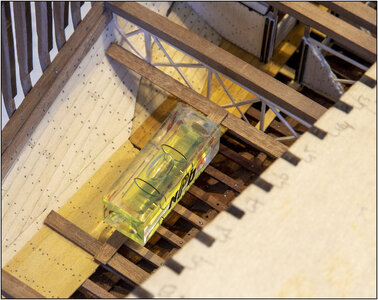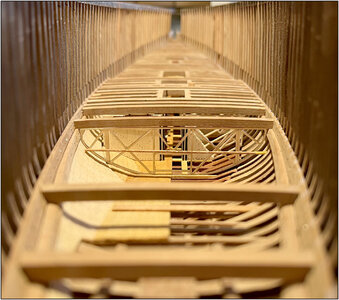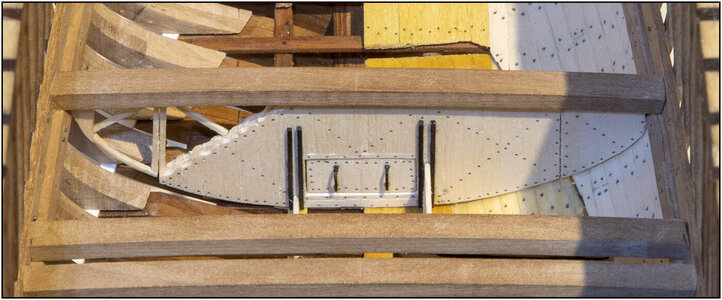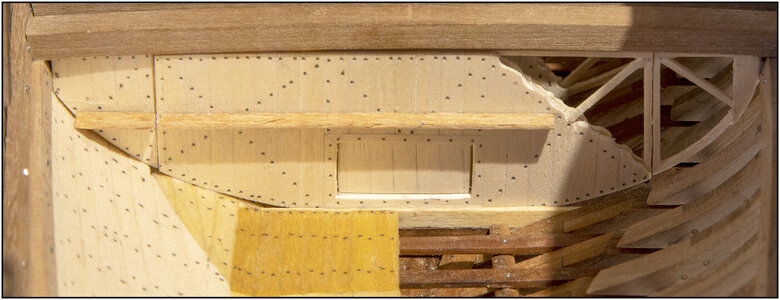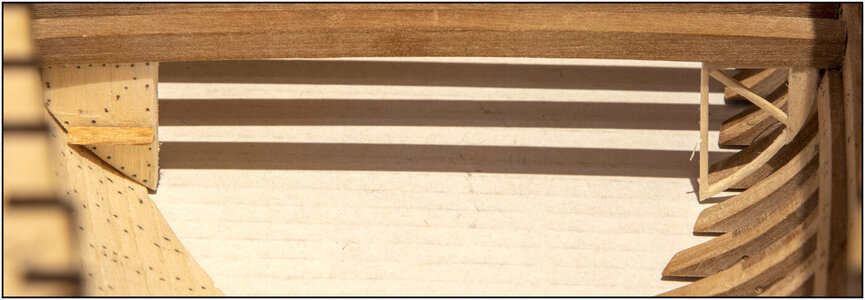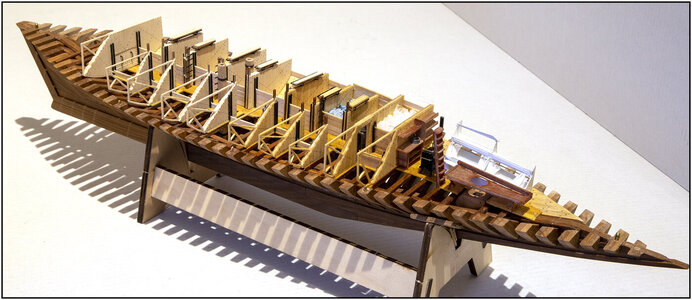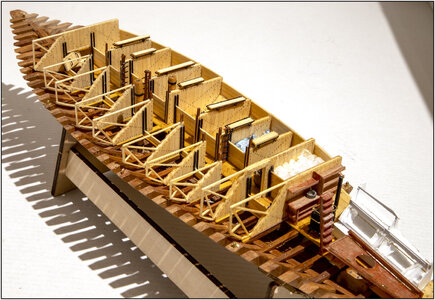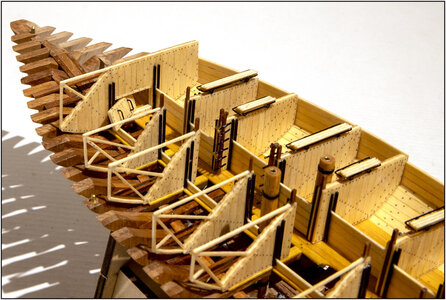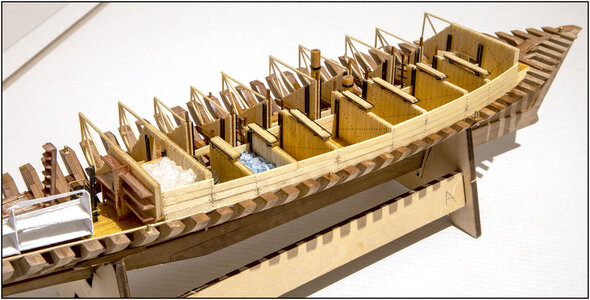Started making a paper mold:
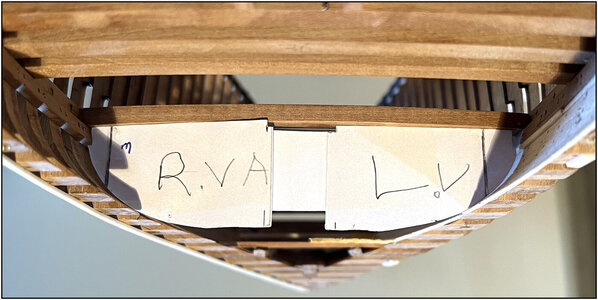
Use the plank bender to bend the outer edge of the beams and let them dry in place:
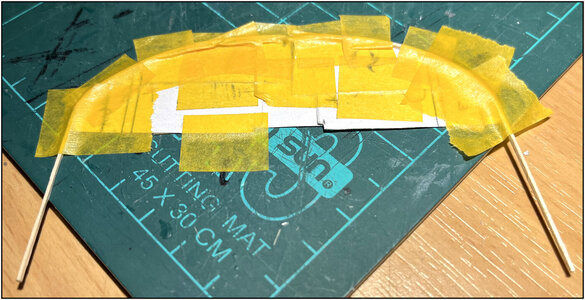
The base:
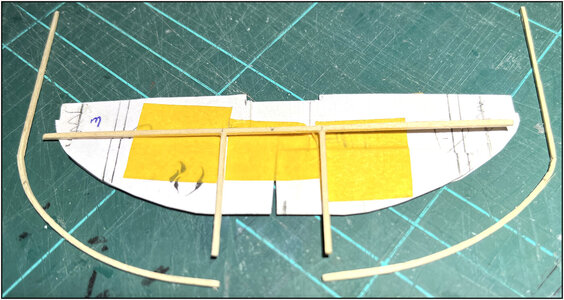
Because the ends of the top beam are bent downwards to get camber, 2 uprights were made in the middle.
On the mold the frame with all beams assembled:"
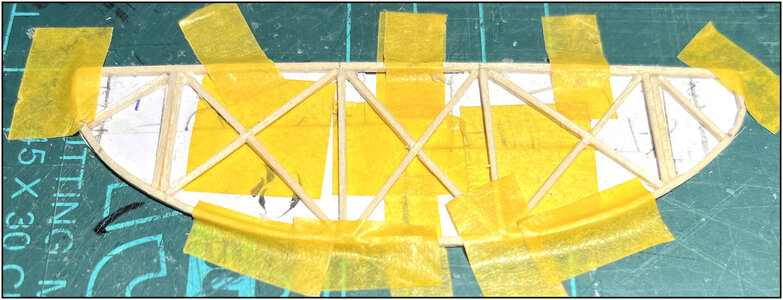
Now let the wood glue dry well before I can cut the frame free from the paper mold and fit into the hull under the deck beam.
All in all a productive day.
Regards, Peter

Use the plank bender to bend the outer edge of the beams and let them dry in place:

The base:

Because the ends of the top beam are bent downwards to get camber, 2 uprights were made in the middle.
On the mold the frame with all beams assembled:"

Now let the wood glue dry well before I can cut the frame free from the paper mold and fit into the hull under the deck beam.
All in all a productive day.
Regards, Peter





